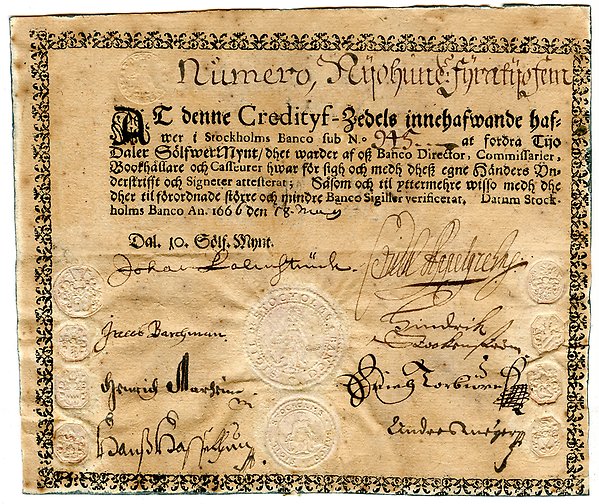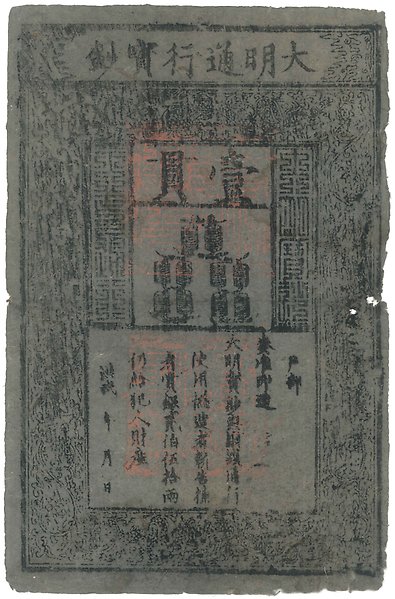Banknotes
The first paper money was produced in China during the early Middle Ages. The first modern banknotes in Europe were issued by Johan Palmstruch's bank in Stockholm in the 1660s. Palmstruch's notes became so popular that the bank started printing notes on credit - which ended up almost costing Palmstruch his life!
Ever since, banknotes have often been printed when simple means of payment are needed, such as during a war. They have also sometimes been issued during periods of extreme inflation, as in Germany in the 1920s or as in Zimbabwe in the early 2000s.
The artistic design of banknotes can also say a lot about the present day. For example, the motifs on banknotes from the many newly independent countries of the 20th century often express modern society, dreams for the future and optimism.
What is in the collections?
The collections of Uppsala University's Coin Cabinet include examples of Swedish banknotes, principally from the 17th and 18th centuries. But there are also later banknotes issued all over the world, from the Russian Revolution and First World War prison camps, to the independent countries of Eastern Europe in the 1990s. There is also a large collection of German so-called emergency notes from the economic crisis of the early 1920s.
All images of the Coin Cabinet's items in Alvin can be downloaded in print quality and may be used freely, both commercially and non-commercially.

Banknote, Stockholms banco, issued 17 april 1666. Inv. nr 600001

Chinese paper money from 1388. Inv. nr 680013
Want to know more about the collection?
As a private individual, you can access the objects in our collections in various ways. Look out for our events, visit the Gustavianum's various exhibitions or search for the objects on the digital platform Alvin. If you have specific questions, you can contact our antiquarians for each collection.
